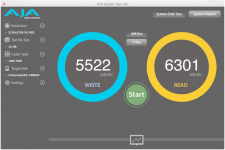I'm ready to let spinning drives die. Capacity is the only purpose they can really serve right now, but in almost every other metric lag way, way behind solid state storage. I want solid state to catch up on the capacity metric as well. That's what I'm saying.
I don't know if latency on a drive is my main bottleneck, but I suspect in my mostly consumer system, my NVMe drive latency isn't the main bottleneck keeping my system from booting up faster or my games from loading faster.
For client storage I agree.
My work laptop has a 2.5" spinner in it (with Intel SSD cache, but still) and it is an absolute pain to deal with.
As previously mentioned, I got my first SSD in 2009. It was expensive, but it was so transformitive, that I immediately vowed to upgrade all of my client machines to SSD's. By 2010 the only spinning hard drives I had in clients were secondary drives for large storage, and by 2011 even they were gone from the clients.
I moved to SSD only for local storage, but stored bulk files on my NAS.
If you ask me, spinning hard drives have been all but obsolete in client machines for a decade, but yeah, I am usually an early adopter with those sorts of things.
My NAS however is a different story all together.
It' currently has 120TB of spinning hard drives and is in the process (slowly, ordering and swapping one drive a month) of being upgraded to 192TB. SSD's in this setting would be complete overkill for the performance needed for mass storage of files, media libraries, etc. It would also be obscenely expensive. I mean, it's already expensive as it is with hard drives. 12 of them at $350 a pop, and the backplane and controller to handle them. Doing the same thing with SSD's would be absolutely insane and wouldn't really buy me much if anything at all.
I'm definitely in support of hard drives hanging around for quite a bit longer for NAS use.
There is no "price per GB" target for me to move to SSD's, because as SSD's get cheaper over time, my storage requirements also grow, so I need more of them.
I'll switch when the cost per GB of large capacity SSD's comes within range of large capacity hard drives.
Right now I'm sticking 16TB hard drives in my server one by one at $350.
Does anyone want to tell me what a 16TB SSD would cost me? Especially one that is more reliable (preference for MLC)


